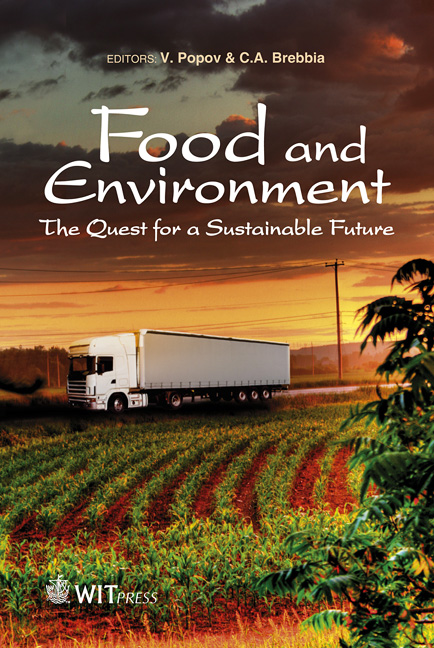Soil Composition Of Community Gardens: Are There Quality Concerns?
Price
Free (open access)
Transaction
Volume
152
Pages
7
Page Range
95 - 101
Published
2011
Size
305 kb
Paper DOI
10.2495/FENV110101
Copyright
WIT Press
Author(s)
S. Wunderlich, C. Feldman, K. Latif & P. Punamiya
Abstract
It is suggested, but not confirmed, that soil composition and minerals in soil can affect the nutritional quality of the produce. Determining soil composition of community gardens has therefore become significant for foods that are grown in these gardens as the popularity of community gardens are on the rise. A comparative study of five (5) community garden soils from different regions of New Jersey and New York over a period of 4 months was conducted. A total of nine (9) elements including Al, Cr, Fe, Ni, Cu, Zn, As, Cd, and Pb were analysed using the EPA Method 3051A. Among all gardens, soil content of Fe, Al, and Pb were the highest concentrations (mg/kg), 6620 ± 4036, 3528± 2108, 221 ± 98 respectively and Ni, As and Cd were the lowest; 6.72 ± 5.37, 3.02 ± 1.55, and 0.22 ± .083 mg/kg in that order. There was a high variation in the Pb concentration among gardens which could be a source for concern. These findings indicate that there were consistently high levels of Al, Fe, and Pb concentrations in the soil samples from the selected community gardens. The extra heavy metals, such as lead and arsenic in the soil could be of health concern if these affect the plants grown in these soils. All garden soil samples emerged to be low in Cr, As, and Ni concentrations. The presence of these heavy metals in the soil does not always imply that they are available to plants, especially if they are soluble in the soil. Hence, further studies are warranted to investigate the effect of heavy metals in soil on the nutritional quality of edible portion of plants. Keywords: soil composition, community gardens, trace and heavy metals.
Keywords
soil composition, community gardens, trace and heavy metals





